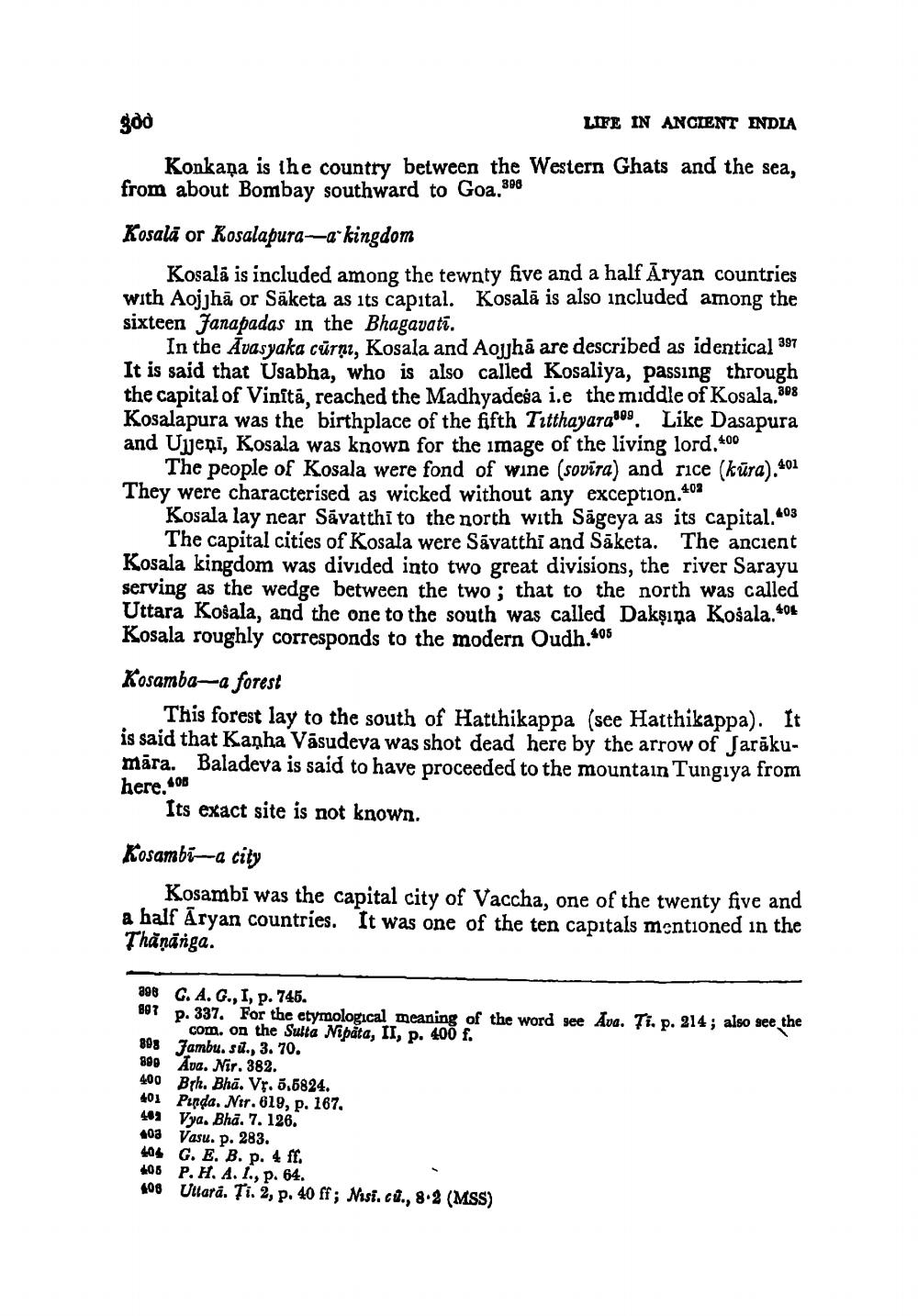________________
god
LIFE IN ANCIENT INDIA
Konkana is the country between the Western Ghats and the sea, from about Bombay southward to Goa.30
Kosala kicapital cities of atthi to the northout any exceptio ruce (kūra).402
Kosalā or Kosalapura--a-kingdom
Kosala is included among the tewnty five and a half Aryan countries with Aojjhā or Säketa as its capital. Kosalā is also included among the sixteen Janapadas in the Bhagavatī.
In the Avasyaka cūrni, Kosala and Aouhá are described as identical 397 It is said that Usabha, who is also called Kosaliya, passing through the capital of Vinită, reached the Madhyadesa i.e the middle of Kosala.308 Kosalapura was the birthplace of the fifth Titthayara''9. Like Dasapura and Ujjeni, Kosala was known for the image of the living lord.00
The people of Kosala were fond of wine (sovīra) and rice (kūra).401 They were characterised as wicked without any exception.403
Kosala lay near Săvatthi to the north with Sāgeya as its capital.603
The capital cities of Kosala were Savatthi and Sāketa. The ancient Kosala kingdom was divided into two great divisions, the river Sarayu serving as the wedge between the two ; that to the north was called Uttara Košala, and the one to the south was called Dakgina Košala.SOL Kosala roughly corresponds to the modern Oudh.405 Kosambama forest
This forest lay to the south of Hatthikappa (see Hatthikappa). It is said that Kanha Vasudeva was shot dead here by the arrow of sarākumāra. Baladeva is said to have proceeded to the mountain Tungiya from here. 106
Its exact site is not known. Kosambi~a city
Kosambi was the capital city of Vaccha, one of the twenty five and a half Aryan countries. It was one of the ten capitals mentioned in the Thănānga.
298 G. A. G., 1, p. 745. 897 p. 337. For the etymological meaning of the word gee Ava. Ti. p. 214; also see the
com. on the Sulta Nipăta, II, p. 400 f. 893 Jambu, su., 3. 70. 899 Ava. Nir. 382. 400 BTh. Bhā. Vr. 5,5824. 401 Punda. Nir. 619, p. 167. 462 Vya. Bhā. 7. 126. 103 Vasu. p. 283. 404 G. E. B. p. 4 ff. 406 P. H. A. I., p. 64. 408 Uttara. Ti. 2, p. 40 ff; Nisi.ci., 8.2 (MSS)




